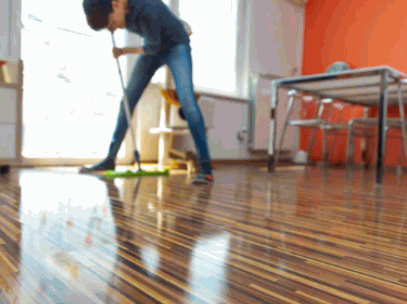Table of Contents
Slippery floors can pose serious safety risks, turning a simple stroll into a potential accident. Using anti-slip coatings can help mitigate these risks efficiently.
Understanding why floors become slippery and recognizing common culprits, such as wet surfaces, oils, and dust, is crucial for maintaining a safe home.
This article highlights these hazards and provides effective remedies and preventive measures, including DIY remedies and non-slip treatments, to keep your floors safe and secure.
Discover how to tackle slippery surfaces with solutions like anti-slip adhesive and ensure your home remains a hazard-free haven.
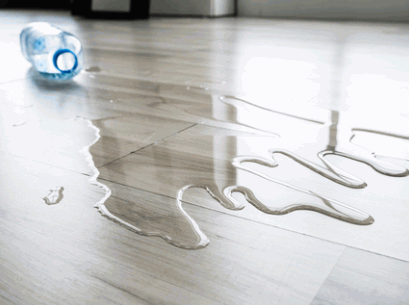
Why Do Floors Become Slippery?
Understanding why floors become slippery is crucial for ensuring safety in various environments, particularly in homes and workplaces. Slippery floors can result from a variety of factors including spills from food and drink, moisture accumulation, and inadequate floor maintenance.
Over time, elements like dust accumulation and humidity effects can exacerbate these conditions, leading to safety hazards that put individuals at risk of accidents and injuries.
Furthermore, different types of flooring, such as hardwood floors, marble floors, and concrete floors, can each exhibit varying degrees of slipperiness based on their surface treatments and the cleaning solutions used.
Find out more: How To Clean Soot Off Bricks
How Can Slippery Floors Be Dangerous?
Slippery situations can arise suddenly, making it crucial to address floor safety proactively.
Slippery floors pose significant safety risks that can lead to severe accidents and injuries, particularly in high-traffic areas where people are constantly on the move. Applying slip-resistant coatings can substantially reduce these dangers.
The presence of slippery conditions increases the likelihood of slips and falls, which can result in anything from minor bruises to serious medical issues such as fractures or head injuries.
It is essential to address these dangers through effective slip-prevention techniques, flooring treatment options, and the use of slip-resistant materials to maintain a safe environment for everyone.

What Are The Common Causes Of Slippery Floors?
Common causes of slippery floors can range from environmental factors such as spills and moisture to improper cleaning techniques that leave behind residue, such as wax build-up or dust and debris.
Understanding these causes is vital for effective floor maintenance, as the choice of cleaning agents and techniques can significantly influence the level of traction on various surfaces.
For instance, while hardwood floors may require specific cleaning agents to avoid damage, other surfaces might benefit from more vigorous cleaning techniques to maintain safety.
Wet Floors
Wet floors are one of the most common culprits of slippery surfaces, often resulting from spills, leaks, or cleaning processes that fail to dry properly. These conditions create severe safety risks, particularly in high-traffic areas where the likelihood of slips and falls increases dramatically. Effective moisture control using tools like dehumidifiers and the use of proper cleaning solutions are essential to minimise these hazards and ensure safe walking conditions. Non-slip mats and traction pads can further enhance safety.
Implementing strategies for moisture control, such as using absorbent mats or deploying dehumidifiers, can significantly reduce the chances of slips. Utilising appropriate cleaning solutions that promote quick drying can play a pivotal role in maintaining safety. It is also crucial to establish a regular maintenance schedule that includes:
- Frequent inspections of floors to identify potential hazards.
- Immediate cleanup of spills and leaks.
- Training staff on proper cleaning techniques to avoid leaving surfaces slick.
By prioritising these preventative measures, environments can become much safer, fostering a culture of safety for everyone involved.

Oily Or Greasy Floors
Oily or greasy floors can create exceptionally slippery conditions that pose serious safety issues, especially in kitchens or commercial settings where food preparation takes place. The presence of grease and oil not only makes floors hazardous but also complicates the cleaning process, requiring specialised cleaning products and floor treatment solutions. Utilising slip-resistant materials can help mitigate these risks and enhance floor safety.
Understanding the sources of oil and grease on surfaces is crucial for effective cleaning. Common culprits include:
- Food spills during meal preparation
- Lubricants from machinery
- Cosmetic products used in salon settings
To address these challenges, utilising industrial-grade degreasers and appropriate floor treatment solutions can make a significant difference. Effective cleaning techniques often involve:
- Mopping with hot, soapy water followed by rinsing
- Applying absorbent materials to soak up excess grease
- Ensuring thorough drying to prevent further slipperiness
Along with cleaning, incorporating slip-resistant surfaces is essential not just for safety but also for maintaining overall cleanliness in high-risk areas.
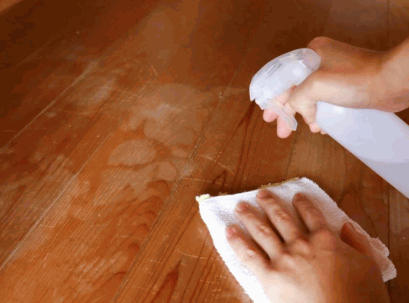
Dusty Floors
Dusty floors are often overlooked contributors to slippery surfaces, as dust accumulation can create a thin film that reduces traction, particularly on hardwood and tiled floors. Regular routine cleaning is essential to combat this issue, utilising effective cleaning solutions that can lift dust without leaving behind residue. Proper floor maintenance practices will help to maintain a safer walking environment.
The presence of dust not only presents a hazard in terms of slipperiness, but it also accumulates allergens that can affect indoor air quality. The significance of keeping floors free from dust cannot be overstated; an effective cleaning strategy should include routine cleaning schedules involving sweeping and mopping. Routine cleaning also involves using appropriate mop solutions and cleaning agents tailored to floor types.
- Start with a dry mop or swept floor to collect loose dust.
- Follow with a damp mop utilising cleaning solutions designed for specific floor types.
- Incorporate professional deep cleaning sessions as needed, particularly for porous surfaces.
By adopting these practices, homeowners and businesses alike can enhance their floor maintenance efforts, ensuring both safety and cleanliness.
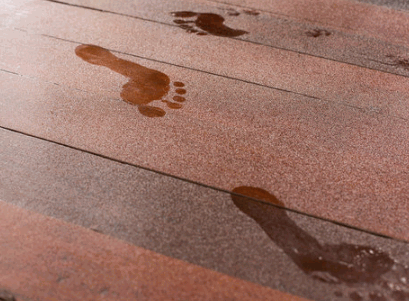
Floors With Residue
Floors with residue, such as wax build-up or leftover cleaning agents, can significantly increase the risk of slips and falls, particularly on polished surfaces. Over time, these residues can create exceptionally slippery surfaces that not only compromise safety but also affect the appearance and longevity of floor types such as hardwood and marble. Implementing appropriate floor treatment measures is vital for maintaining safety and aesthetics.
When surfaces are coated with residue, their grip diminishes considerably, transforming routine activities into potential hazards. The inefficient use of cleaning agents can create layers that attract dirt and grime, exacerbating the issue.
- Regular cleaning routines should focus on using agents specifically designed to tackle build-up without leaving behind additional residue.
- Identifying residue types will aid in selecting the right cleaning solutions tailored to varying floor materials.
Awareness and proactive measures, including regular floor treatments, can foster a safer environment, reducing the risk of accidents and prolonging floor life.
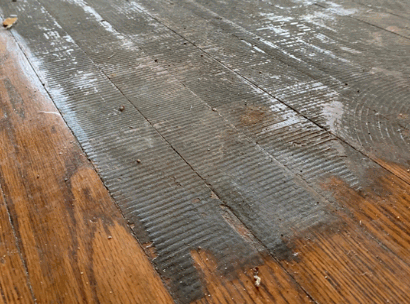
What Are The Best Home Remedies For Slippery Floors?
Many homeowners seek effective and affordable home remedies for slippery floors, and common solutions include DIY remedies like vinegar solutions, baking soda paste, and non-slip adhesive strips, all of which can help enhance traction and clean surfaces.
These natural cleaning products not only mitigate the risk of slippery conditions but also contribute to overall floor maintenance while being environmentally friendly. Using non-slip mats and rug pads can further improve safety in high-traffic areas.
Use Vinegar And Water Solution
A vinegar and water solution is a popular cleaning method that can help reduce slippery conditions on various floor types like wood floors and tiles. The acetic acid in vinegar not only cleans but also breaks down any grease or wax build-up, making it an effective mop solution for maintaining floor traction. Regularly using this cleaning technique can significantly improve floor safety.
To create this effective treatment, simply mix equal parts of vinegar and water in a spray bottle or bucket. This simple combination not only proves effective in tackling stubborn stains but also leaves behind a streak-free shine. By using this solution, the user can harness the natural cleaning properties of vinegar, making it a healthier alternative to chemical-based cleaners. Additionally, adding salt or lemon juice can enhance its cleaning effectiveness.
Among the benefits, this technique offers:
- Cost-effectiveness – It requires inexpensive household ingredients.
- Environmentally friendly – It avoids harsh chemicals that can harm the environment.
- Versatility – Suitable for various surfaces, including tiles and laminate.
There are limitations to consider. Vinegar should not be used on natural stone surfaces, such as granite or marble, as the acid can damage them. While it effectively cuts through grime, heavy-duty stains may require more potent solutions.
This vinegar and water concoction is a versatile tool for maintaining safe and clean floors.
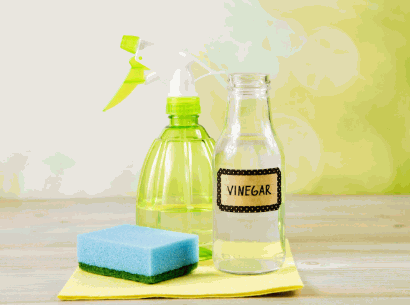
Sprinkle Baking Soda
Sprinkling bicarbonate of soda on slippery floors can act as a natural abrasive, helping to lift grime and enhance traction, especially in areas that suffer from grease and oil. The bicarbonate of soda paste created by mixing it with water can be particularly effective when used as a cleaning agent for routine floor maintenance, allowing users to effectively combat slippery conditions.
To prepare the paste, simply combine a half cup of bicarbonate of soda with a few tablespoons of water, adjusting the quantity to achieve a thick but spreadable consistency. For optimal results, apply the paste to the affected area and allow it to sit for 10-15 minutes, giving it time to break down tough residues. This method works wonders on a variety of surfaces, including:
- Using black tea as a natural cleaner can enhance the effectiveness of lemon juice.
- Kitchen tiles
- Bathroom floors
- Concrete surfaces
The alkaline properties in the bicarbonate of soda neutralise odours and cut through grease, making it a versatile choice for maintaining both cleanliness and safety in homes or workplaces. By utilising this natural solution, individuals can create a safer environment while effectively managing routine cleaning tasks and addressing wax buildup.
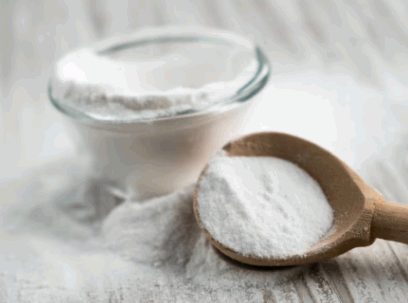
Apply Lemon Juice And Black Tea
Lemon juice, combined with black tea, is another effective DIY remedy for slippery floors. The acidity of lemon and tannins in black tea helps to cut through grease and grime while leaving a fresh scent.
When incorporated into your cleaning routine, it not only tackles tough stains but also acts as a natural disinfectant, making it a sustainable choice for the environmentally conscious.
- By mixing lemon juice with equal parts water, you create a powerful yet gentle cleaning solution.
- This mixture can be sprayed directly onto surfaces or used with a mop to provide an extra level of traction.
- What sets lemon juice apart from conventional cleaning products is its ability to biodegrade easily, reducing harmful waste.
Unlike many commercial cleaners that may emit strong smells and contain harmful chemicals, lemon juice offers a fresh, zesty aroma, making cleaning a more pleasant experience.
Ultimately, switching to this natural alternative not only enhances floor safety but contributes to a cleaner environment overall.
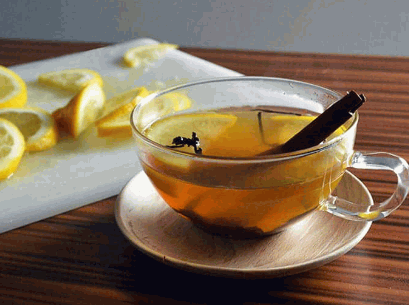
Use Salt And Water Solution
A simple salt and water solution can also serve as an effective cleaning agent for slippery floors, particularly on hard surfaces where moisture control is essential. This method is especially useful as part of slippery floor solutions. Salt’s abrasiveness can help lift dirt while its antibacterial properties contribute to the cleaning process, making it a valuable addition to your floor maintenance routine.
When preparing this solution, combine one cup of salt with a gallon of warm water, ensuring that the salt dissolves completely for optimal results. Mixing this solution effectively allows you to harness its full potential in removing grime and preventing slipperiness. After cleaning, it’s beneficial to rinse the area with plain water to eliminate any residue.
Using a salt and water solution works exceptionally well on:
- Tile floors
- Concrete surfaces
- Vinyl flooring
It’s advisable to avoid this method on delicate woods or porous surfaces, as the abrasiveness may cause scratches or damage. By integrating this natural cleaning agent into your routine, you can enjoy squeaky clean and safe floors effortlessly.
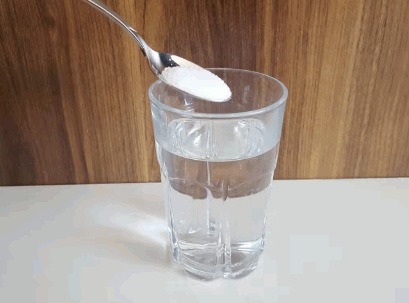
Make A Mixture Of Dish Soap And Water For Floor Cleaning
Creating a mixture of washing-up liquid and water offers an effective method for floor cleaning and addressing slippery surfaces, particularly in kitchens where spills are common. The washing-up liquid acts as a surfactant, breaking down grease and grime, making for an excellent cleaning solution that enhances floor traction.
To prepare this simple yet powerful cleaning mixture, start by combining a few drops of washing-up liquid with a bucket of warm water. Diluting the liquid properly ensures that it works effectively without leaving any residue behind.
Use a mop or soft cloth to apply the solution to the floor, paying special attention to areas that tend to accumulate dirt and oil. This practice is a staple in many maintenance routines.
The advantages of this mixture over traditional cleaners are manifold. Not only is it cost-effective, but it’s also environmentally friendly, lacking the harsh chemicals found in many commercial products. This mixture is particularly well-suited for tile, laminate, and vinyl floors.
- Effective on greasy spots
- Gentle on surfaces
- Non-toxic and safe for children and pets
Maintaining a clean and safe flooring surface is crucial in any household, and utilising this mixture can simplify the process while delivering impressive results. Consider consulting flooring experts for more comprehensive floor cleaning tips.
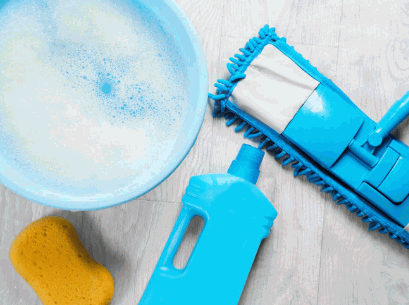
Use Rubbing Alcohol And Professional Cleaning Options
Isopropyl alcohol serves as an excellent cleaning solution for slippery surfaces, particularly when dealing with sticky or oily residues left on floors. This powerful cleaning agent can break down tough substances, making it easier to maintain a safe and clean walking environment.
To effectively utilise isopropyl alcohol for cleaning, it’s important to know its versatility across various surfaces. It not only tackles grease stains but also addresses the slippery conditions often caused by spills or product residues. For optimal results, follow these steps:
- Preparation: Ensure the area is well-ventilated, and gather necessary materials such as a spray bottle, clean cloths, and gloves.
- Application: Dilute the isopropyl alcohol with water if desired, and spray it generously onto the affected area.
- Wipe Down: Use a clean cloth to wipe the surface, applying a little more pressure on stubborn spots.
- Final Touch: Allow the area to air dry, which helps to eliminate any lingering odours and ensures a safe, non-slippery surface.
This straightforward method puts an emphasis on safety and effectiveness, ensuring environments remain clean and hazard-free. For persistent issues, consider professional cleaning services.
Apply Cornstarch And Consider Floor Coatings
Cornflour can be a surprising yet effective tool in combating slippery surfaces, as it can absorb moisture and grease, significantly reducing slip risks. This natural option is a great addition to your arsenal of DIY remedies for home floor maintenance, particularly in high-traffic areas.
When incorporating cornflour into cleaning solutions, many find it surprisingly versatile, similar to specialised floor coatings that can prevent slipperiness. For instance, dusting a thin layer on floors can help:
- absorb grease
- eliminate odours
- enhance traction
It serves as an eco-friendly alternative in DIY stain removers for carpets, effectively lifting oil-based stains. In addition, products like Add-A-Grip and Skid-Tex can enhance traction. For those looking to refresh their space, using cornflour in combination with vinegar creates a natural scrub that tackles tough residue while remaining gentle on surfaces.
In bathrooms, its moisture-absorbing properties can help maintain a dry and safe environment, making it a go-to solution for avoiding slips and falls.
Use A Mixture Of Olive Oil And Vinegar
A mixture of olive oil and vinegar can serve as an effective cleaning and conditioning solution for certain floor types, especially hardwood floors where the addition of oils can enhance the surface’s lustre. While this remedy helps clean and nourish the floor, it is important to apply it carefully to avoid creating overly slippery conditions.
This combination, when used appropriately, can not only maintain the beauty of floors but also protect them from wear and tear. To prepare this natural cleaning solution, mix equal parts of olive oil and vinegar in a clean spray bottle. Shake well to ensure that the ingredients blend together effectively and form a natural cleaning solution. Here’s how you can use this solution safely:
- Test First: Before applying to the entire floor, test it in a small, inconspicuous area.
- Application: Lightly spray the mixture onto a cloth rather than directly on the floor to avoid over-saturation.
- Drying: Ensure the floor dries completely before walking on it to prevent slips.
While this DIY remedy is eco-friendly, be aware that excessive oil can create slippery surfaces, posing a risk, especially in high-traffic areas.
How Can Slippery Floors Be Prevented? Tips From Flooring Experts
Preventing slippery floors is achievable through a combination of preventative measures, routine cleaning, and proper floor maintenance practices, often recommended by flooring experts.
Implementing strategies such as using rugs, doormats, and appropriate cleaning agents, like pH-neutral cleaners, can significantly reduce the risk of slippery conditions, enhancing overall floor safety in both residential and commercial settings.
Regular assessments and proactive maintenance routines are crucial to ensuring a safe environment for everyone.
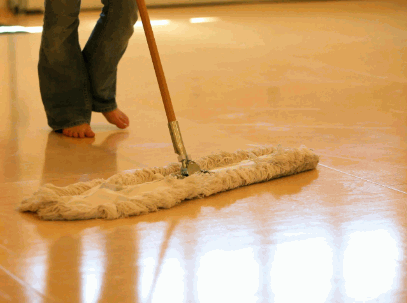
Keep Floors Clean And Dry
Keeping floors clean and dry is one of the simplest yet most effective strategies for preventing slippery conditions in various environments. Regular routine cleaning practices help eliminate spills, dirt, and moisture, which are primary contributors to slippery surfaces and safety hazards. Implementing effective moisture control measures further enhances floor safety, ensuring that spaces remain safe for all occupants.
In residential and commercial properties alike, the approach to maintaining cleanliness may vary depending on the type of flooring involved. Consider using products from Global Safe Company or WearMax for specialised treatment.
- Hardwood floors should be swept or vacuumed regularly to remove dust, while a damp mop can keep them shining without excessive moisture. Consider using pH-neutral cleaners suitable for wood.
- Tiles, often found in kitchens and bathrooms, benefit from regular scrubbing to eliminate grime and their unique tendency to retain moisture, so a squeegee for excess water is recommended.
- Carpeted areas require frequent vacuuming and occasional deep cleaning to stave off moisture accumulation and odours.
By selecting the right tools for each type of flooring and adhering to a consistent cleaning schedule, individuals can significantly reduce the risk of accidents while enhancing the longevity and appearance of their floors.
Use Rugs Or Mats
Utilising rugs, rubber mats, or non-slip mats in high-traffic areas can significantly bolster floor safety by creating a barrier that helps absorb moisture and enhance traction.
These preventative measures are particularly effective in environments prone to spills or where wet surfaces are common, effectively reducing the risk of slips and falls.
Understanding the various types of rugs and mats available is essential for selecting the right option for any environment. For instance, outdoor mats made from durable materials are suitable for entryways, as they can withstand harsh weather while trapping dirt and moisture. In contrast, plush area rugs prove advantageous in living rooms, providing comfort and style while also acting as a cushion against falls.
For commercial spaces,
- rubber-backed mats
- anti-fatigue mats in kitchens
- Safety Floor Treatment
help protect against accidents by promoting stability.
It’s important to consider the specific location and its level of foot traffic, ensuring that the chosen rug or mat aligns with both aesthetic and functional requirements.
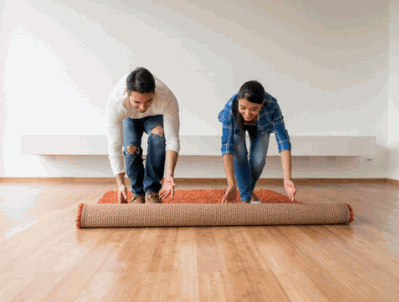
Wear Non-slip Shoes
Wearing non-slip shoes is a personal safety measure that can greatly reduce the risk of slipping on wet or greasy floors. These shoes are designed with specialised traction pads that provide a better grip, making them an essential choice for those who often navigate slippery conditions, especially in commercial or kitchen settings.
In environments where spills and splashes are common, the right footwear becomes crucial. Slip-resistant shoes not only protect against falls but also contribute to overall workplace safety. For instance, individuals working in restaurants or hospitals where floor conditions may often pose hazards should prioritise their shoe selection.
Here are some tips for choosing non-slip shoes that enhance safety:
- Look for Specialised Outsoles: Shoes with textured traction pads significantly improve grip.
- Consider Material: Rubber soles tend to offer better traction compared to other materials.
- Test for Comfort: A comfortable fit ensures that the shoes are worn consistently.
Taking these factors into account can lead to a sound decision and ultimately reduce safety risks in slippery environments.
Use Anti-slip Floor Coatings
Applying anti-slip floor coatings can provide long-lasting solutions for preventing slippery conditions across various surfaces. These specialised floor treatments enhance grip and traction, significantly reducing slip risks in both residential and commercial settings, particularly where moisture and spills are prevalent.
Among the variety of options available, epoxy-based coatings excel in durability and can withstand heavy foot traffic, making them ideal for warehouses and industrial applications. For indoor spaces, polyurethane coatings and WearMax offer excellent resistance to chemicals, thus preserving aesthetic appeal while ensuring safety.
There are also textured vinyl sheets, grit additives, and Skid-Tex that can be applied to existing floors for enhanced slip resistance. Each type of coating has its unique benefits and may perform differently depending on the floor type—wood, tile, or concrete, leading to more comprehensive safety solutions.
- Epoxy-based coatings: Best for heavy traffic.
- Polyurethane coatings: Great for chemical resistance.
- Textured vinyl sheets: Easy to install for retrofits.
- Grit additives: Customisable for any surface.
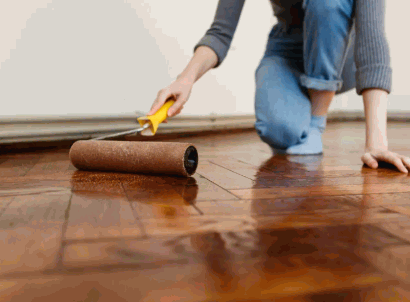
Regularly Maintain Floors
Regularly maintaining floors is crucial to ensure their safety and longevity, as it helps prevent the accumulation of dirt, moisture, and residues that can lead to slippery conditions. Implementing proper cleaning solutions and preventative measures as part of a maintenance routine can significantly enhance floor traction and overall safety.
Without a consistent schedule for floor maintenance, the risk of slips and falls increases, posing hazards not only to individuals but also potentially leading to costly repairs. It is essential to consider the type of flooring and apply suitable cleaning methods tailored to its unique properties. Conducting floor assessments regularly can help identify potential issues before they become hazards.
In addition, utilising high-quality cleaning solutions that are designed for specific floor types, such as pH-neutral cleaners, can maximise their lifespan.
- Step 1: Vacuum regularly to remove loose dirt and debris.
- Step 2: Apply a damp mop with a suitable cleaning solution to carefully lift stubborn stains.
- Step 3: Schedule professional deep cleaning at least twice a year.
- Step 4: Check and address any wear and tear promptly to maintain the floor’s integrity.
Through these steps, one can uphold a safe and appealing environment, ensuring that the flooring remains in optimal condition.
